
Generating value from apps is foremost among objectives for many decision makers — it’s crucial for developers to understand how to effectively monetize the applications they create.
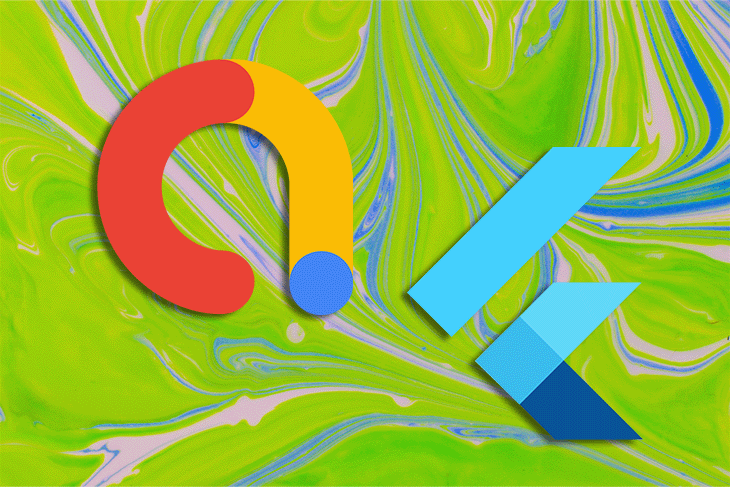
In Flutter, there are main three ways you can monetize apps:
In this tutorial, we are going to walk through how you can monetize your Flutter app using AdMob (ads for mobile).
AdMob is an Ad network from Google that shows a variety of targeted advertisements on your app to users. To integrate the AdMob service in the Flutter app, you’ll use the google_mobile_ads plugin, created by the Flutter team itself.
This plugin allows you to display banner, interstitial (full-screen), rewarded, and native ads inside your Flutter app.
We are going to build a simple app that shows different ad formats when a button is pressed.
Here’s how it looks when complete:
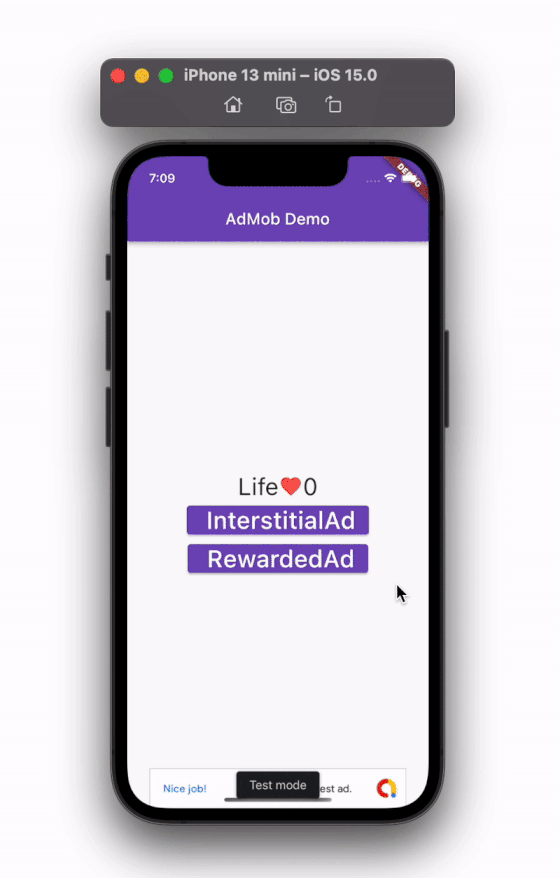
Here’s what we are going to cover in this tutorial:
The Replay is a weekly newsletter for dev and engineering leaders.
Delivered once a week, it's your curated guide to the most important conversations around frontend dev, emerging AI tools, and the state of modern software.
Setting up AdMob comprises the following steps:
Before you get started integrating AdMob in your Flutter app, the first steps require you to create the new app inside the AdMob console.
Here’s how you can create the app in AdMob:
(Note: Make sure you add (create) an app for both Android and iOS apps so that you can better track the revenue from each platform)
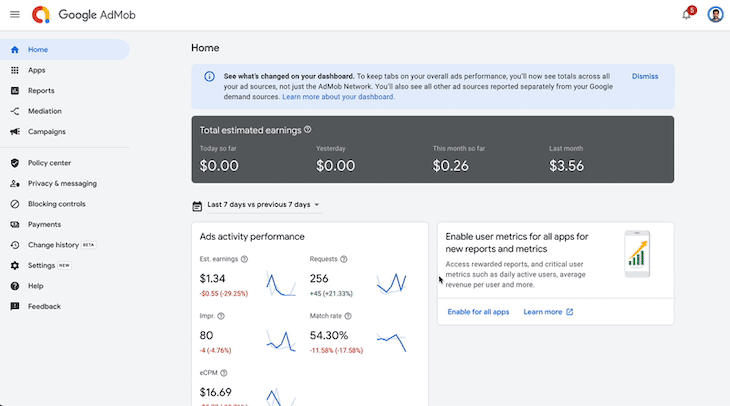
The kind of advertisement presented is determined by the ad unit. You should create ad units for each type of ad that you plan to have in your app.
Here’s how you do it:
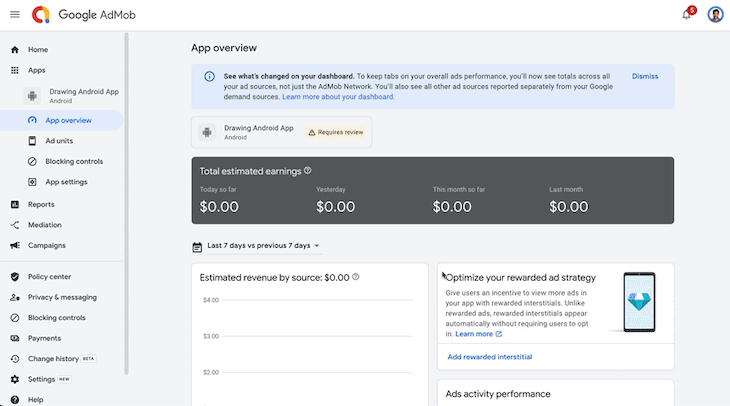
After creating the app and ad units, you can return to your app and add the google_mobile_ads plugin.
Your code should look like this:
dependencies:
flutter:
sdk: flutter
# The following adds the Cupertino Icons font to your application.
# Use with the CupertinoIcons class for iOS style icons.
cupertino_icons: ^1.0.2
google_mobile_ads: ^1.2.0 # NEW
Now, it’s time to initialize the plugin. Navigate to the main.dart and add the following lines before runApp, which looks like this:
void main() {
WidgetsFlutterBinding.ensureInitialized();
MobileAds.instance.initialize(); //<-- SEE HERE
runApp(MyApp());
}
While you are still developing your app, it’s advisable to test your app with test ads and not the real ads.
(Note: Testing the real ads by yourself can send the wrong signal to Google and your account may be suspended. Additionally, if you are testing the app on an emulator, test ads are automatically enabled)
There are a couple of ways you can enable the test ads for real devices.
Using the demo test IDs is the easiest and fastest way to test ads. You just need to copy and paste the IDs and you can continue testing your app. The demo IDs for Android are available here and for iOS they can be found here.
You can keep these demo IDs in a separate Dart file and then call from the app when required like this:
// ad_helper.dart
import 'dart:io';
class AdHelper {
static String get bannerAdUnitId {
if (Platform.isAndroid) {
return 'ca-app-pub-3940256099942544/6300978111';
} else if (Platform.isIOS) {
return 'ca-app-pub-3940256099942544/2934735716';
} else {
throw new UnsupportedError('Unsupported platform');
}
}
}
//--- Call like this ----
_bannerAd = BannerAd(
adUnitId: AdHelper.bannerAdUnitId,
);
You can also add your device to the testing list by providing your test ID. If you opt to add your device to the test list, you no longer need to use the demo IDs. In your code, replace MobileAds.instance.initialize() with the following code:
MobileAds.instance
..initialize()
..updateRequestConfiguration(
RequestConfiguration(testDeviceIds: ['7C92BD192385F05DDBD6FC73370E2D63']),
);
(Note 1: You can find this test ID in the console while you run your app)
(Note 2: Replace the demo IDs and test IDs before publishing your app)
The final step in setting up AdMob is to update the platform-specific file. In this step, you’ll add the AdMob App ID in the AndroidManifest.xml (for Android) and info.plist (for iOS).
For Android, open the AndroidManifest.xml file and add the following tag:
<manifest xmlns:android="http://schemas.android.com/apk/res/android"
package="com.example.admob_demo">
<application
android:label="admob_demo"
android:name="${applicationName}"
android:icon="@mipmap/ic_launcher">
...
<meta-data
android:name="com.google.android.gms.ads.APPLICATION_ID"
android:value="ca-app-pub-3940256099942544~3347511713"/>
</application>
</manifest>
For iOS, open the info.plist file and add the following key-value pair:
<?xml version="1.0" encoding="UTF-8"?>
<!DOCTYPE plist PUBLIC "-//Apple//DTD PLIST 1.0//EN" "http://www.apple.com/DTDs/PropertyList-1.0.dtd">
<plist version="1.0">
<dict>
<key>CFBundleDevelopmentRegion</key>
<string>$(DEVELOPMENT_LANGUAGE)</string>
<key>CFBundleDisplayName</key>
<string>Admob Demo</string>
<key>CFBundleExecutable</key>
<string>$(EXECUTABLE_NAME)</string>
...
<key>GADApplicationIdentifier</key>
<string>ca-app-pub-3940256099942544~1458002511</string>
</dict>
</plist>
(Note: The app IDs used in the above code are all test IDs. You can simply use this to test but make sure to replace them with your original ID before going live)
Banners ads are the simplest form of advertisement which can be shown at the top or bottom of the page. Typically the ads inside the banner refresh by themselves after some time.
(Note: Before you show banner ads, make sure you have completed all the steps in the
“Setting up AdMob” section above)
Here’s how you show banner ads in your Flutter app:
adUnitId, request, size and listener.load() methodAdWidgetThe following is a code example to give you a better understanding of what is happening and what it should look like:
late BannerAd _bannerAd;
bool _isBannerAdReady = false;
@override
void initState() {
super.initState();
_loadBannerAd();
}
void _loadBannerAd() {
_bannerAd = BannerAd(
adUnitId: AdHelper.bannerAdUnitId,
request: AdRequest(),
size: AdSize.banner,
listener: BannerAdListener(
onAdLoaded: (_) {
setState(() {
_isBannerAdReady = true;
});
},
onAdFailedToLoad: (ad, err) {
_isBannerAdReady = false;
ad.dispose();
},
),
);
_bannerAd.load();
}
//----------- Show Ads like this -------
if (_isBannerAdReady)
Align(
alignment: Alignment.bottomCenter,
child: Container(
width: _bannerAd.size.width.toDouble(),
height: _bannerAd.size.height.toDouble(),
child: AdWidget(ad: _bannerAd),
),
),
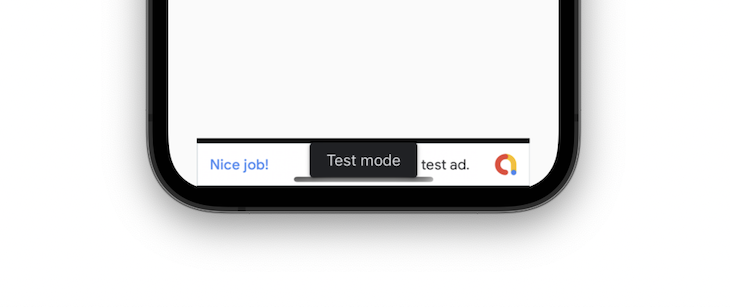
Interstitial ads are full-screen ads and are typically shown during natural pauses in your app, such as moving to another page.
Here’s how you display the interstitial ads:
initState of your app, load the interstitial ad with required parameters such as adUnitId, request, and adLoadCallback. Inside adLoadCallback, you get a callback whether the ad has loaded or notFullScreenContentCallback that gives a callback for the onAdShowedFullScreenContent, onAdDismissedFullScreenContent and onAdFailedToShowFullScreenContentonAdDismissedFullScreenContent callback, dispose the current ad and load the new ad.show() methodThe following is a code example for interstitial ads:
InterstitialAd? _interstitialAd;
@override
void initState() {
super.initState();
_createInterstitialAd();
}
void _createInterstitialAd() {
InterstitialAd.load(
adUnitId: AdHelper.interstitialAdUnitId,
request: request,
adLoadCallback: InterstitialAdLoadCallback(
onAdLoaded: (InterstitialAd ad) {
print('$ad loaded');
_interstitialAd = ad;
_numInterstitialLoadAttempts = 0;
_interstitialAd!.setImmersiveMode(true);
},
onAdFailedToLoad: (LoadAdError error) {
print('InterstitialAd failed to load: $error.');
_numInterstitialLoadAttempts += 1;
_interstitialAd = null;
if (_numInterstitialLoadAttempts < maxFailedLoadAttempts) {
_createInterstitialAd();
}
},
));
}
void _showInterstitialAd() {
if (_interstitialAd == null) {
print('Warning: attempt to show interstitial before loaded.');
return;
}
_interstitialAd!.fullScreenContentCallback = FullScreenContentCallback(
onAdShowedFullScreenContent: (InterstitialAd ad) =>
print('ad onAdShowedFullScreenContent.'),
onAdDismissedFullScreenContent: (InterstitialAd ad) {
print('$ad onAdDismissedFullScreenContent.');
ad.dispose();
_createInterstitialAd();
},
onAdFailedToShowFullScreenContent: (InterstitialAd ad, AdError error) {
print('$ad onAdFailedToShowFullScreenContent: $error');
ad.dispose();
_createInterstitialAd();
},
);
_interstitialAd!.show();
_interstitialAd = null;
}
// --- Show like this ------
ElevatedButton(
onPressed: () {
_showInterstitialAd();
},
child: Text(
' InterstitialAd',
style: TextStyle(fontSize: 30),
),
),

Rewarded ads are full-screen ads and are typically opted into by users in order to receive the reward. The reward can be anything, such as a virtual coin or extra life in a game that helps the user to accomplish a task.
Most of the steps for displaying the rewarded ads are identical to the interstitial ads except, while showing the rewarded ad, you get a callback if the user has earned the reward and you can update it on screen accordingly.
Here’s the difference:
_rewardedAd!.show(
onUserEarnedReward: (AdWithoutView ad, RewardItem reward) {
setState(() {
life += 1;
});
});
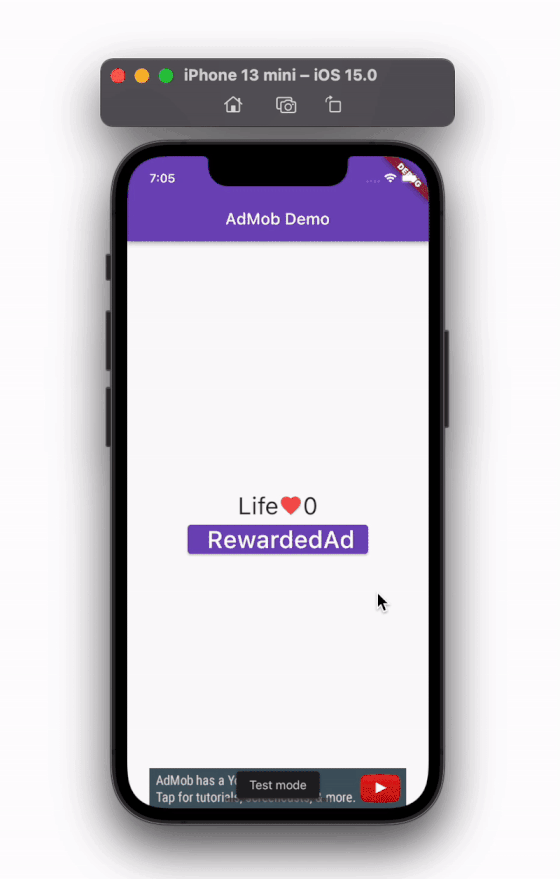
The full source code can be found here.
Adding monetization to your app helps you provide additional streams of revenue for applications.
In this tutorial, we first looked at the different ways you can monetize your app and then explored how to integrate the AdMob service into your Flutter app.
We went through step-by-step instructions in setting up AdMob and then demonstrated how you can show different types of ads with practical examples. We also understood when to use a specific ad type to get the best results.
Install LogRocket via npm or script tag. LogRocket.init() must be called client-side, not
server-side
$ npm i --save logrocket
// Code:
import LogRocket from 'logrocket';
LogRocket.init('app/id');
// Add to your HTML:
<script src="https://cdn.lr-ingest.com/LogRocket.min.js"></script>
<script>window.LogRocket && window.LogRocket.init('app/id');</script>

Container queries let components respond to their own layout context instead of the viewport. This article explores how they work and where they fit alongside media queries.

React Server Components vs Islands Architecture: Learn how each reduces client JavaScript, impacts hydration and interactivity, and which trade-offs matter for production performance.

Large hosted LLMs aren’t always an option. Learn how to build agentic AI with small, local models that preserve privacy and scale.

What storylines defined 2025 in frontend development? We power rank them all, from AI advancements to supply chain attacks and framework breakthroughs.
Hey there, want to help make our blog better?
Join LogRocket’s Content Advisory Board. You’ll help inform the type of content we create and get access to exclusive meetups, social accreditation, and swag.
Sign up now